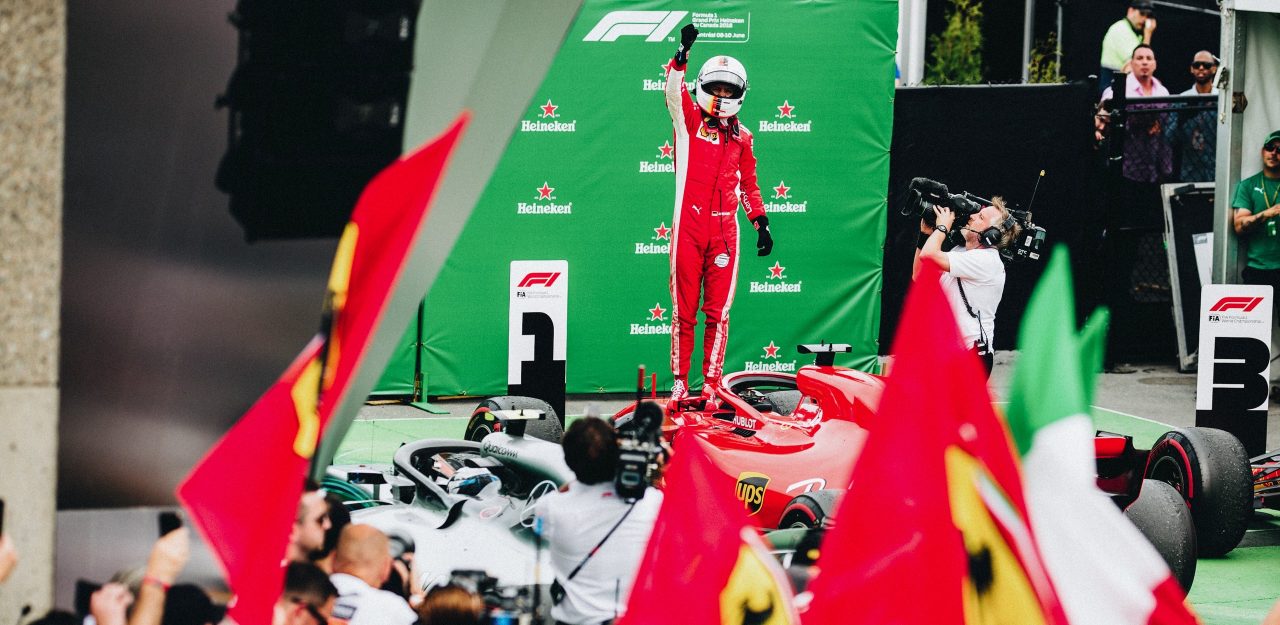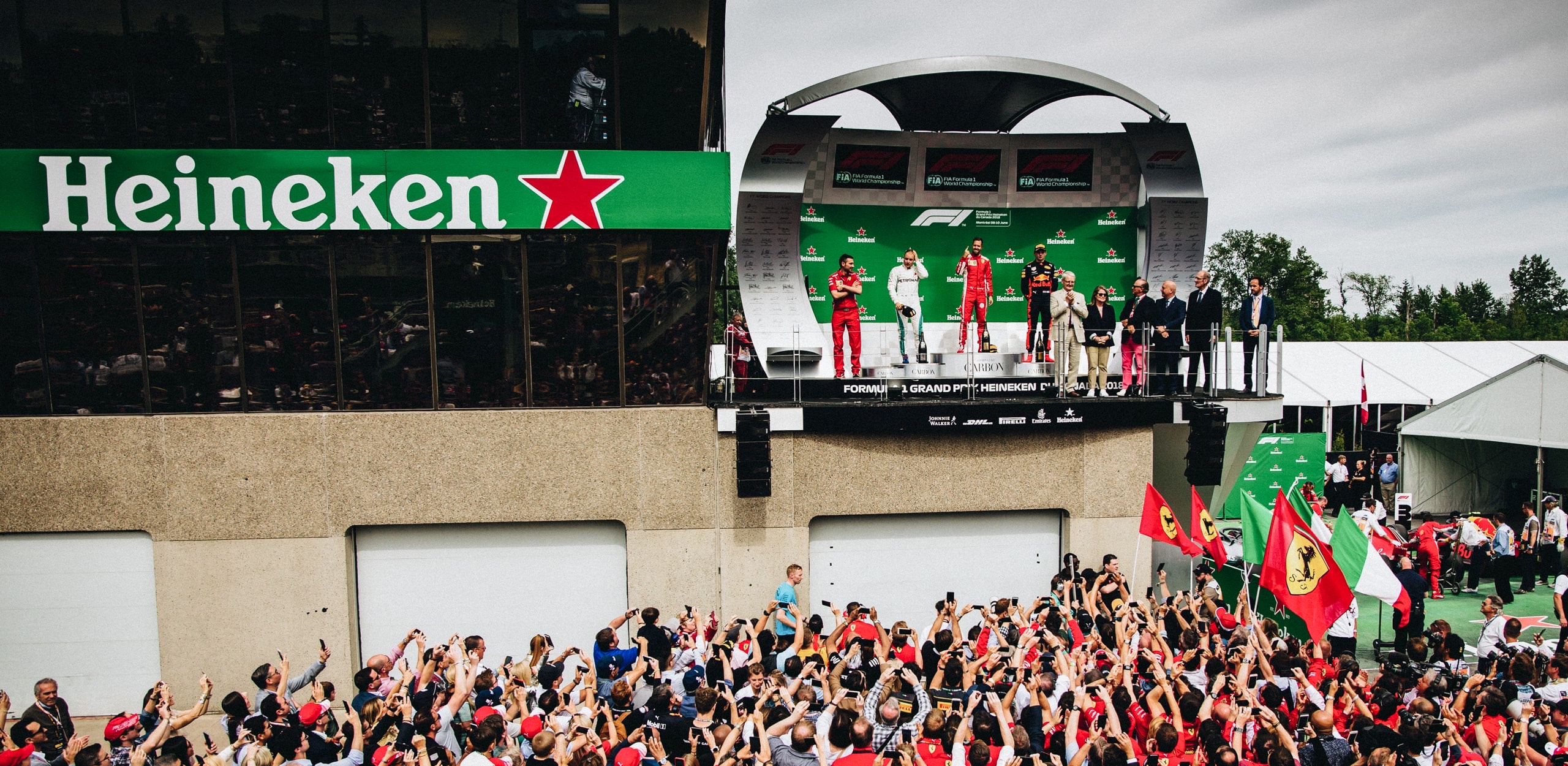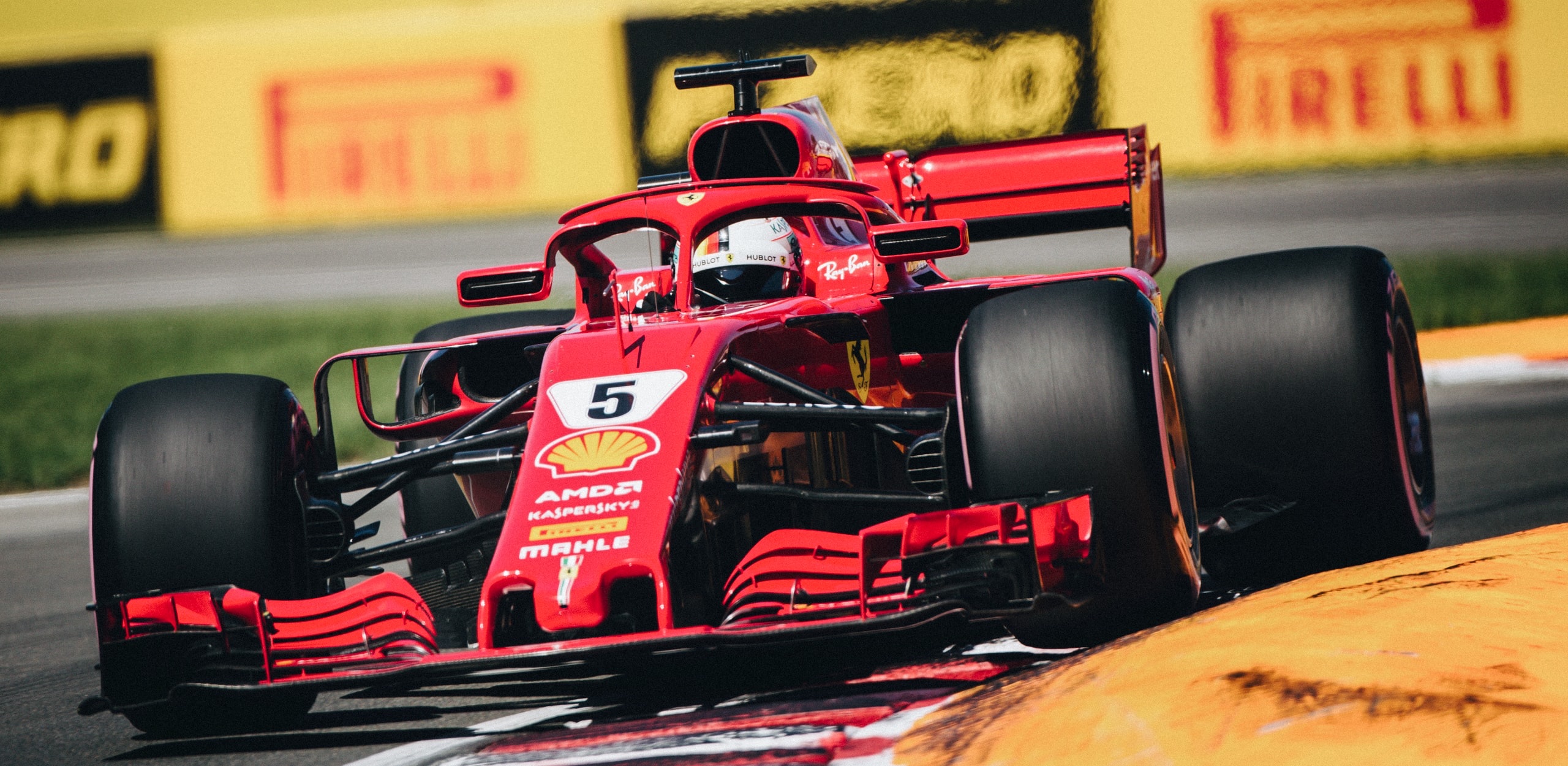
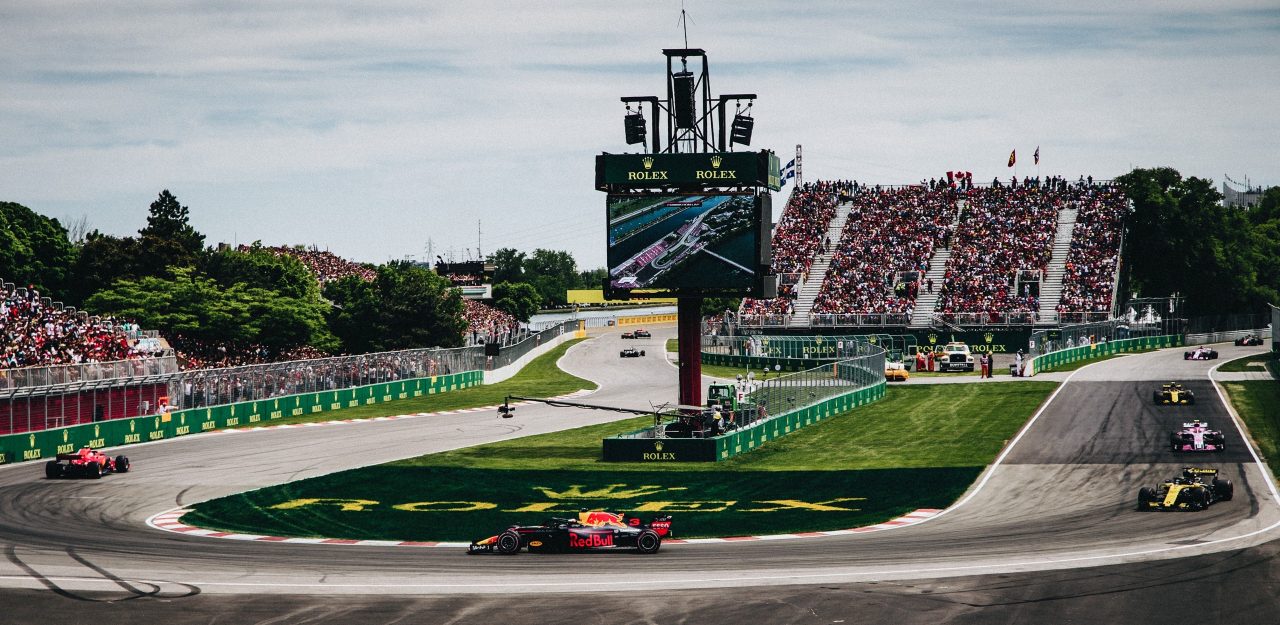
Sebastian Vettel dominated the 2018 Canadian Grand Prix, leading every lap from the pole and easily holding off Valtteri Bottas’ Mercedes to take his 50th Grand Prix victory which vaulted him back into the lead of the Driver’s Championship. Trailing Bottas was third-place finisher Max Verstappen, running his best Grand Prix of the season after his domination of each free practice session and a flawless qualifying lap to start third on the grid.
As a four-time champion, Vettel also demonstrated his understanding of Ferrari’s unique heritage with the Montreal circuit and its fans. Forty years ago, Ferrari’s beloved Gilles Villeneuve took his first Grand Prix victory at the 1978 debut of French Canadian’s home island circuit, and Montreal’s Ferrari love-fest was on. Amazingly, at the beginning of Saturday’s qualif
“Perfect is probably a good way to describe it. Unbelievable,” said Vettel. “I said yesterday how much this place means to Ferrari.
“To come here and have a race like we did today is unbelievable. I think after a long time, a long stretch that Ferrari didn’t win here, I saw everybody around the circuit and they were super happy.”
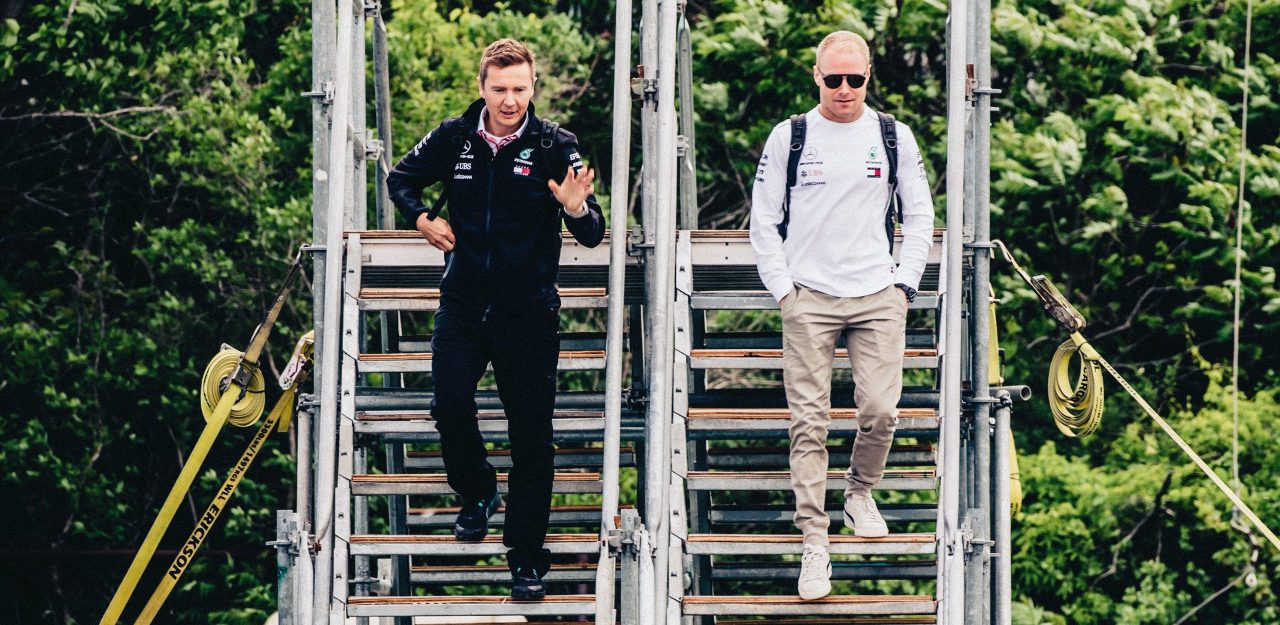
Vettel observations of his dominance would have seemed impossible at the end Saturday qualifying.
First, the no-holds-barred battle between Ferrari, Red Bull and Mercedes for the Canadian Grand Prix pole on Saturday promised a wild Canadian Grand Prix. After all, at one time, Red Bull, Ferrari and Mercedes were separated by just 0.01-second for pole.
Second, the expection after Red Bull rolled the dice on a qualifying strategy of starting on hypersoft tyres from third and fifth places, was both Verstappen and Ricciardo would mount relentless attacks against Vettel and Bottas over the first ten laps.
Nevertheless, those fights never materialised.
Instead, the race fell into a procession, with each team “babying” tyres, brakes and fuel consumption. Few circuits are the better set-up for exciting racing than Montreal. However throw in extreme life-limited power units, race-long fuel and tyre management, and you negate the spectacle entirely.
Gone were the overtakes that made the first races so tantalising as scenarios for the remaining season. In fact, Montreal had no on-track passes amongst the top 3 teams. Even the new extra DRS section could not overcome the deficiencies of this current formula. Cars could get within a second of the car ahead, but then it became impossible for them to follow closely and keep within that second due to the turbulence. As such, the tyres compounds overheated.
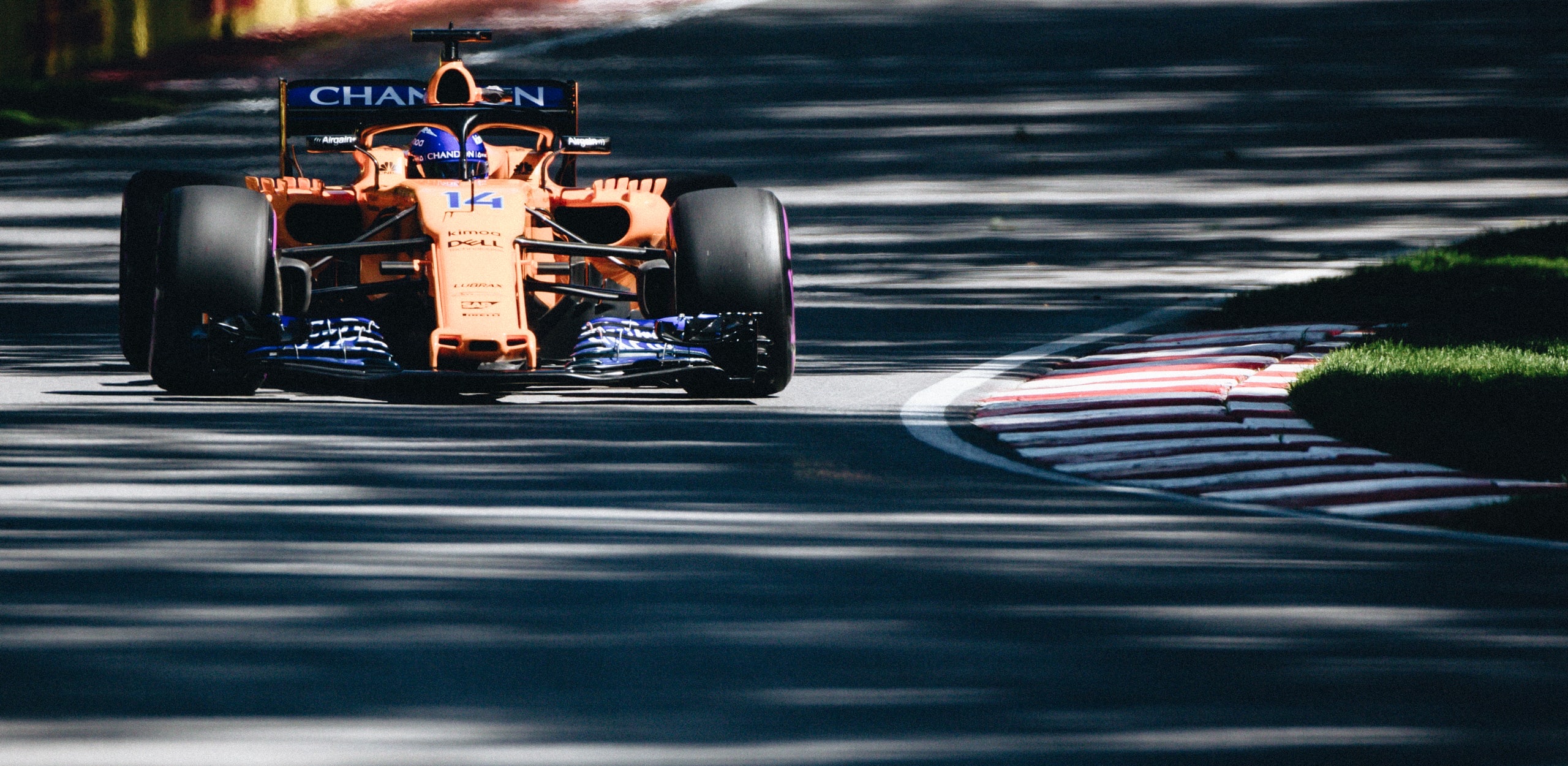
At lights out, Vettel and Bottas took off as one, but behind, Verstappen had a perfect launch that allowed him to be beside Bottas before the end of the 362 metre run to Turn 1. The Dutchman attacked the Finn on the outside into Turn 1, but Bottas had his “elbows out”, and firmly held Verstappen to the outside line around the turn then took command of the inside racing line for Turn 2. The spot went to Bottas.
Hamilton had seemed deeply subdued during both practice and qualifying, and quietly held his fourth while Daniel Ricciardo slashed across Raikkonen on the inside of Turn 2 for fifth. Those positions would remain steady after the mandatory tyre change pit stops save for Hamilton. The Brit’s Mercedes was overheating, and there was nothing he could do but slow down.
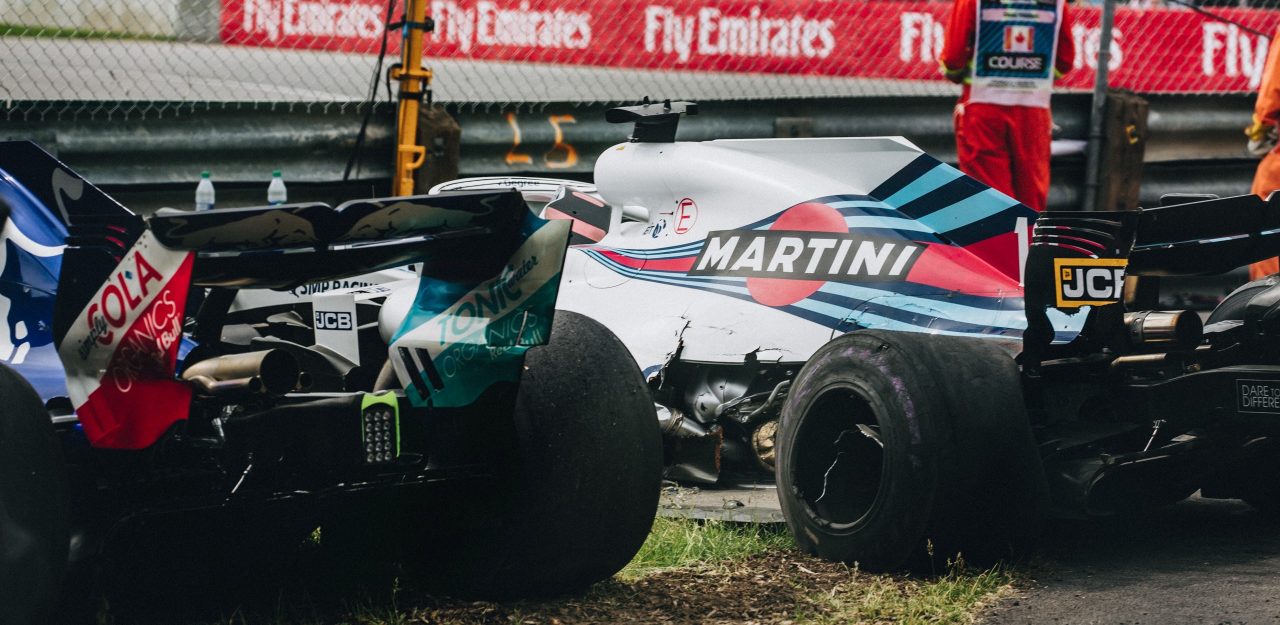
Further back, William’s Lance Stroll made a superb launch, and he soon found himself beside Brendon Hartley’s Toro Rosso on the opening lap. Hartley kept his Toro Rosso beside the Williams around the outside of Turn 5, but as Stoll exited the corner, his unpredictable Williams oversteered into Hartley. The cars locked together, and the Toro Rosso impacted the concrete wall well off the ground. Both Stroll and Hartley flew off the track as one mass, and that’s where they stayed. The field fell behind the Safety Car.
At the restart on Lap 4, Vettel first slowed to back up the field and then quickly launched clear of the pack, followed by Bottas, Verstappen, Hamilton, Ricciardo and Raikkonen. Its the closest any one of them would be to Vettel for the remainder of the Grand Prix.
With the Red Bulls starting with the higher-degradation hypersofts, they were the first of the front-runners to change tyres. Surprisingly they were joined by Hamilton, who was brought in early to allow the Mercedes team to alter some bodywork on his overheating car.
The slightly longer pit stop while Mercedes worked on the car, coupled with Hamilton’s small steering error at the pit exit, allowed Ricciardo to move ahead on the reigning champion into fourth place.
Bottas’ deficit to Vettel was around four seconds when he made his one-and-only pit stop, but Vettel’s equally-swift stop one lap later prevented Bottas from taking any advantage.
In the closing laps, Bottas closed on Vettel while they both passed back-markers, but the Finn made a mistake in Turn 1, allowing Vettel to extend his gap by a couple of seconds.
Despite their shaky start to the weekend, Renault seemed comfortable securing their best points haul since the Azerbaijan Grand Prix. They looked the fastest of the midfield teams all race long and finished with Nico Hulkenberg in seventh and Carlos Sainz in eighth place. However, they were a lap down to the Renault-powered Red Bulls.
Force India’s Esteban Ocon took ninth just ahead of another strong run by Charles Leclerc’s Sauber. It was his fourth points finish this season.
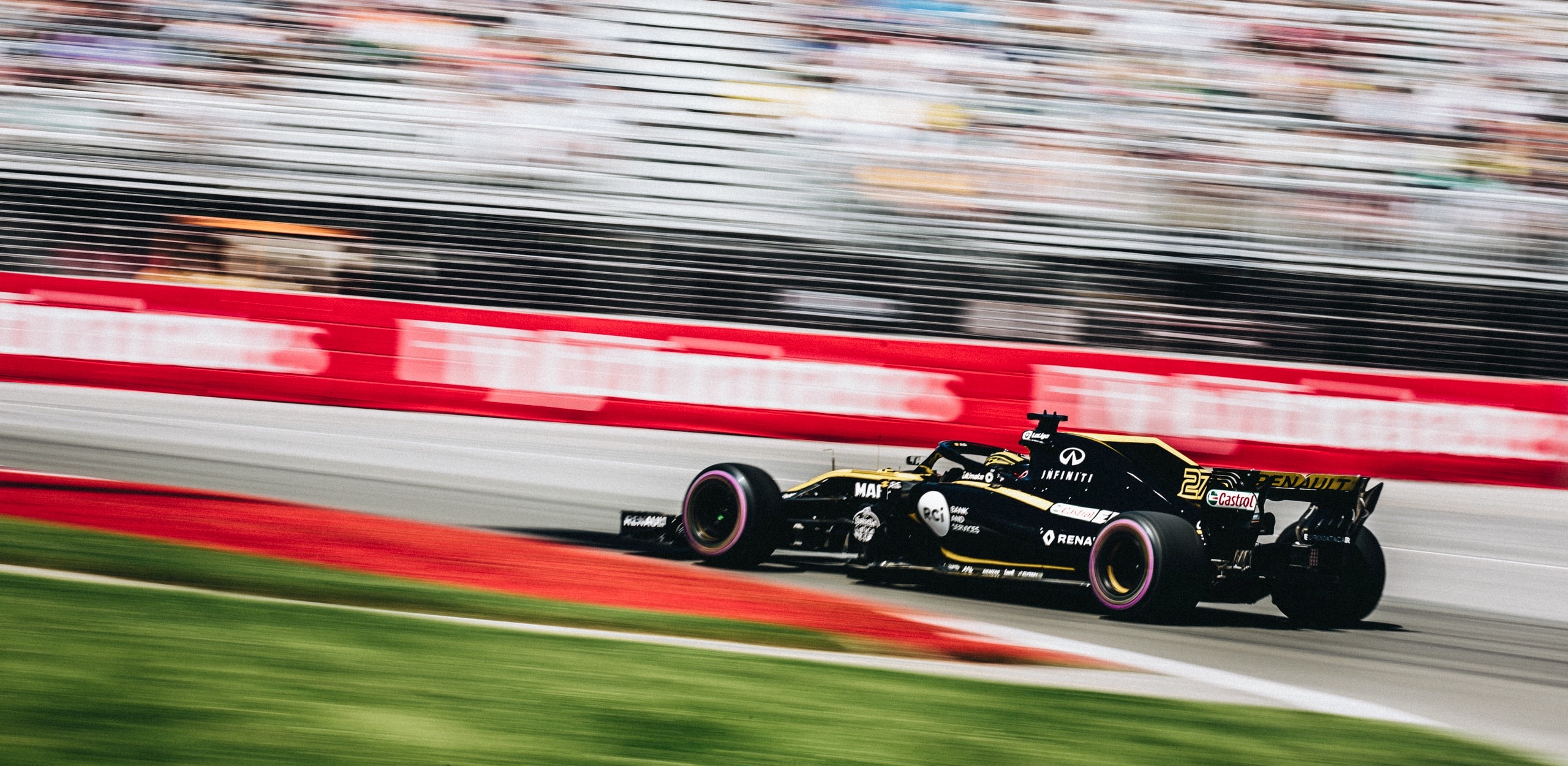
Personal Goal
Fernando Alonso’s 300th Grand Prix weekend should have ended in a hard-fought point battle with Charle Leclerc, but a late-race retirement due to exhaust problems summed up a difficult weekend for the McLaren team. He’ll be racing at LeMans with favoured-to-win Toyota and could come away with the second milestone of his personal Triple Crown. Only a win at the Indianapolis 500 would remain, and with the lack of competitive seats in 2019 F1, don’t be surprised to see him step aside for an Indy Car.
Hamilton On the Edge
It was Lewis Hamilton’s’ worst Canada weekend regarding pace. Mercedes have the worst mechanical grip and traction of the top 3 teams, and Hamilton seems particularly affected emotionally by that handicap. While Pirelli’s ridiculously high tire pressures don’t help any team, Mercedes seems to suffer the most. All of Hamilton’s commanding wins in the past four years never asked for such a deep reading of his car and tyre combination. All that’s changed now and need to be addressed.
Back On Track
Max Verstappen was tremendously fast; impressive for a Red Bull on a power circuit. He finished FP1/FP2/FP3 1st/1st/1st and Q1/Q2/Q3 5th/1st/3rd. His Q3 time was only 0.17s behind Vettel. Had his Red Bull been equipped with a “Party Mode” qualifying power boost similar to the Ferrari Mercedes crews, the final results could have been markedly different.
Courses for Horses
The Canadian Grand Prix also underlined some curiosities about this year’s championship and track suitability. Three different drivers and teams have dominated the last three races with Lewis Hamilton’s Mercedes ruling Spain, Red Bull’s Daniel Ricciardo taking Monaco despite nearly ruinous engine problems and now Sebastian Vettel has returned Ferrari to the top step of the podium in Montreal after 14 years.
Put it down partially to the rules concerning engine allocation and accidents leading to Safety Car periods. However, the leading cause of predictability in 2018 is tyre compound. Wear rate, and chassis adaptability seems to vex Ferrari and Mercedes most, while the Red Bulls are grip-masters but power-limited. Thus we expect tracks like power-negligent Singapore, Austria and Hungary should go to Red Bull; Spa and Monza to Ferrari; and France, Great Britain and Austin to Mercedes.
Any bets?
